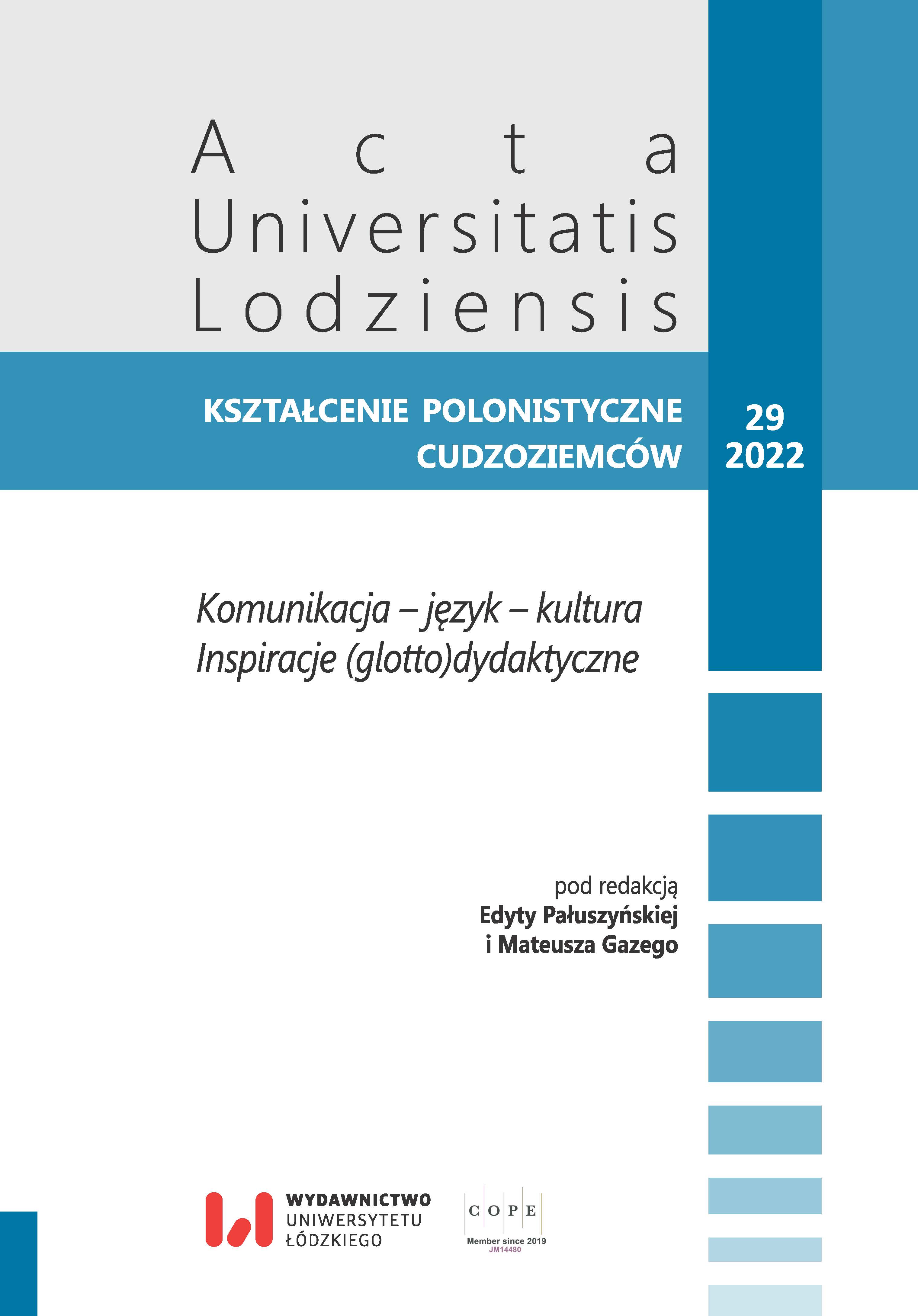„Karuzela plakatowa” jako technika rozwijania działań językowych
DOI:
https://doi.org/10.18778/0860-6587.29.04Słowa kluczowe:
plakat, karuzela plakatowa, dbałość o poprawność językową, dbałość o treść, integracja działań językowych, interakcja, mediacjaAbstrakt
„Karuzela plakatowa” to ciekawa propozycja techniki nauczania. Jest to zadaniowa forma pracy inspirowana sesjami plakatowymi, czyli dyskusjami prowadzonymi przy rozwieszonych plakatach. Tony Lynch i Joan Maclean w artykule A case of exercising: Effects of immediate task repetition on learners’ performance (2001) wykazali związek między zastosowaniem techniki „karuzeli” a wzrostem poprawności produkcji językowej. Efekty ich pracy zachęciły autorkę artykułu do wykorzystania techniki „karuzeli” jako narzędzia wspierającego rozwijanie działań językowych na lekcji języka polskiego jako obcego na poziomie B2. W artykule odpowiemy na następujące pytania: Czy technika „karuzeli plakatowej” jest skutecznym narzędziem nauczania języka polskiego? Jakie korzyści wynikają z zastosowania tej techniki? Jak uczący się oceniają tę technikę? Postaramy się także pokazać, że „karuzela plakatowa” jest ciekawą techniką nauczania mówienia integrującą rozwijanie produktywnych, interakcyjnych i mediacyjnych działań językowych.
Bibliografia
Bujnowicz-Szewczyk I., 2005, Metody aktywizujące z wykorzystaniem plakatu w edukacji polonistycznej w szkole ponadgimnazjalnej, „Acta Universitatis Lodziensis. Folia Literraria Polonica”, 7/2, s. 229–253.
Google Scholar
Byram M., 1997, Teaching and Assessing Intercultural Communicative Competence, Clevedon.
Google Scholar
Council of Europe, 2018, Common European Framework of Reference for Languages: Learning, Teaching, Assessment. Companion Volume with New Descriptors (https://rm.coe.int/cefr-companion-volume-with-new-descriptors-2018/1680787989 [11.12.2022]).
Google Scholar
Gębal P., Miodunka W., 2020, Dydaktyka i metodyka nauczania języka polskiego jako obcego i drugiego, Warszawa.
Google Scholar
Grętkiewicz E., 2005, Szczekająca szczęka Saszy, Warszawa.
Google Scholar
Kajak P., 2017, Poradnik innowacyjnego nauczyciela, Warszawa.
Google Scholar
Karpeta-Peć B., 2008, Otwarty, aktywny, samodzielny…: alternatywne formy pracy: przewodnik dla nauczycieli języków obcych, Warszawa.
Google Scholar
Komorowska H., 2005, Metodyka nauczania języków obcych, Warszawa.
Google Scholar
Lynch T., Maclean J., 2001, „A case of exercising”: Effects of immediate task repetition on learners’ performance, w: M. Bygate, P. Skehan, M. Swain (red.), Researching pedagogic tasks. Second language learning, teaching and testing, Edinburgh, s. 141–162.
Google Scholar
Ostaszewska E., 2016, Plakaty edukacyjne, „Języki Obce w Szkole”, nr 1, s. 97–100.
Google Scholar
Rada Europy, 2003, Europejski system opisu kształcenia językowego: uczenie się, nauczanie, ocenianie, Warszawa.
Google Scholar
Wawrzeń M., 2022, Zadanie jako narzędzie rozwijania międzykulturowej kompetencji komunikacyjnej w nauczaniu języka polskiego jako obcego, niepublikowana praca doktorska, Uniwersytet Jagielloński, Kraków.
Google Scholar
Weiner J., 1992, Technika pisania i prezentowania prac naukowych, Uniwersytet Jagielloński, Kraków.
Google Scholar
https://betterlesson.com/strategy/74 [11.12.2022].
Google Scholar
Pobrania
Opublikowane
Jak cytować
Numer
Dział
Licencja

Utwór dostępny jest na licencji Creative Commons Uznanie autorstwa – Użycie niekomercyjne – Bez utworów zależnych 4.0 Międzynarodowe.










